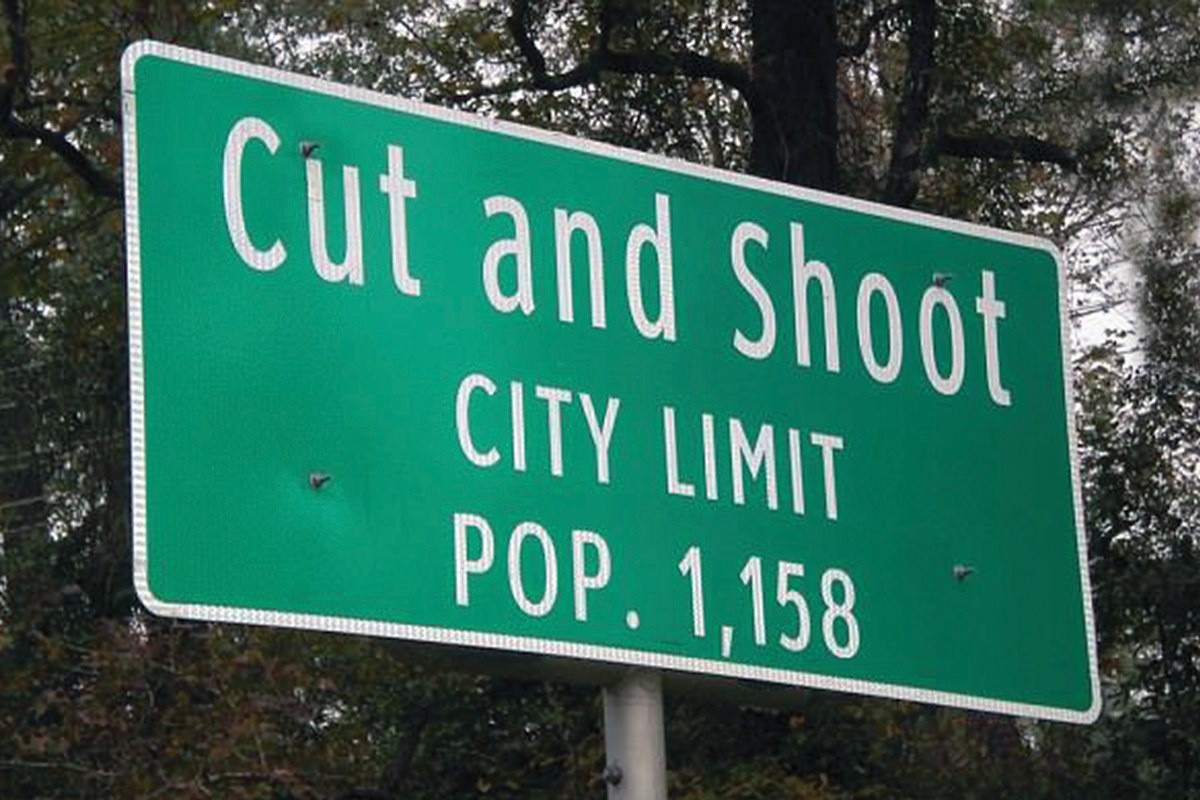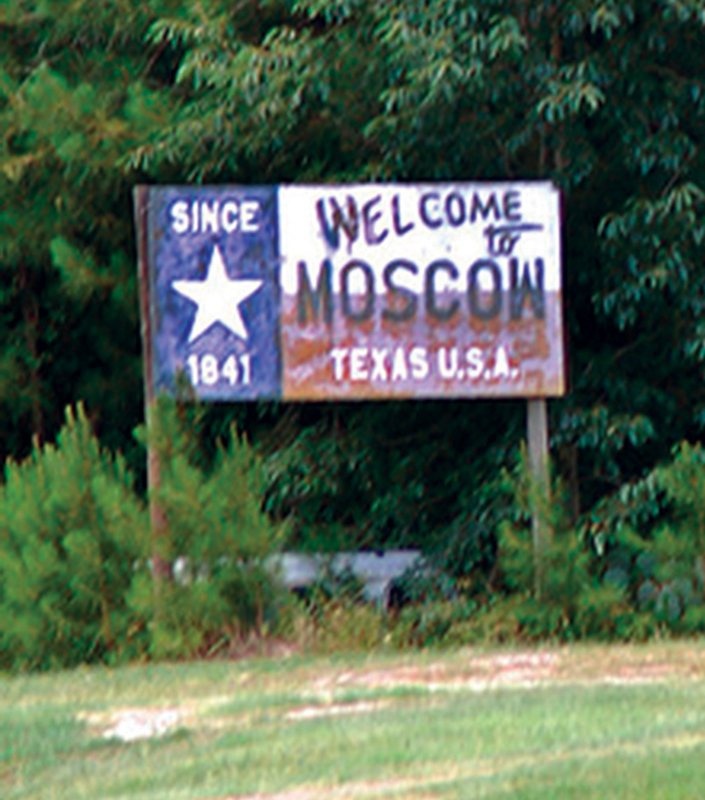Texas always has been in a class of its own. Nobody would expect less from a state big enough to fit 12 other states inside of it and still have room for a decent-size ranch.
But one thing that sets Texas apart from other states is the array of colorful, historic and just plain weird names of its many cities and towns.
Some monikers are self-explanatory, such as Channelview (which overlooks the Houston Ship Channel), Baytown (overlooks Galveston Bay) and Katy (also the nickname for the Missouri-Kansas-Texas, or MKT, railroad, which ran through the middle of town). We even have our share of copycat names, like Paris, Athens, Moscow and Cleveland. Our state heroes are honored with eponymous cities and counties big and small, including Austin, Houston, Crockett, Bowie and Travis.
But when it comes to weird city names, Texas surely leads the way.
Take for example the town of Point Blank, located on the western shore of Lake Livingston. One would think the town was named after gunslingers and their penchant for taming the Old West with their trigger fingers. The real story is a little more romantic—and much less violent.
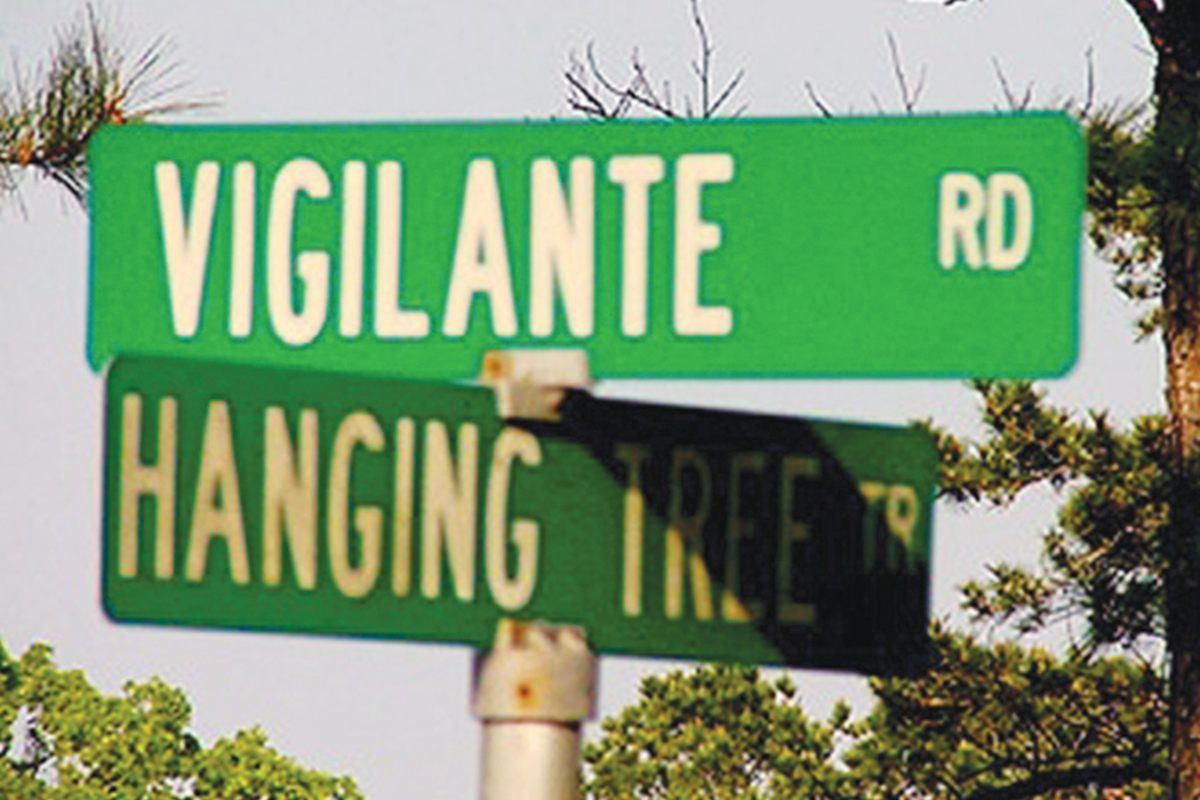
While Point Blank was actually named for a French region (Blanc Point), locals later Anglicized the name and gave its streets more of a Western flair.
R.T. Robinson was the first local merchant in the area, long before the lake was even a drip in the Trinity River. Robinson had a large family, and he brought back a French governess for his children on one of his buying trips. After a while, the governess, Florence Dissiway, became homesick for the area of France she had left and started calling her adopted home “Blanc Point” (“white point” in English). Over the ensuing years, the name became Anglicized to its current name.
Just a few miles from Point Blank is Onalaska. Many locals think the name is a word in a Native American language or even an homage to somewhere in Alaska. But the real story is even more interesting.
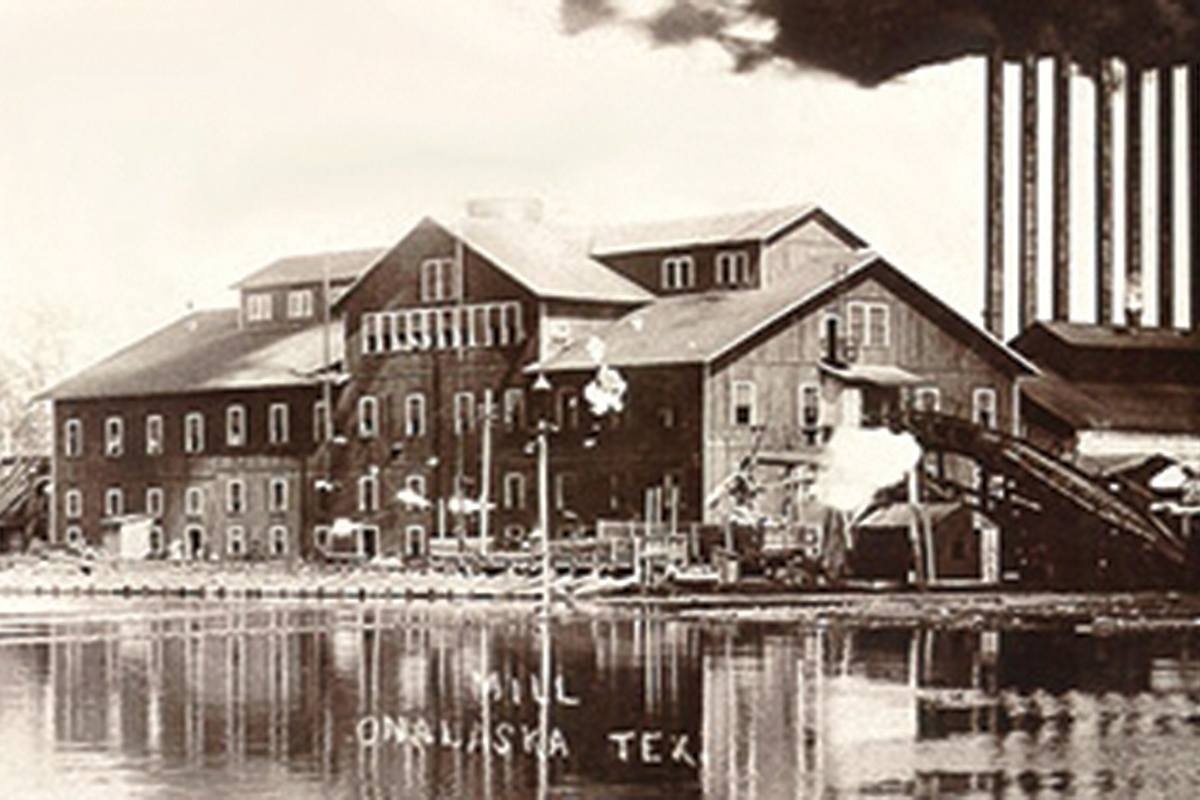
The largest sawmill in Texas was located in Onalaska, on the banks of the Trinity River (and now Lake Livingston). Some remnants of the old mill are still at the bottom of the lake.
William Carlisle, a lumber magnate, built the largest sawmill in Texas there in 1904. The area was unincorporated at the time, and once Carlisle set up his mill, he wanted a name for the town. His favorite poem was The Pleasures of Hope, written in 1799 by Scottish poet Thomas Campbell and which includes the following passage:
Cold on his midnight watch the breezes blow
From wastes that slumber in eternal snow;
And waft, across the wave’s tumultuous roar,
The wolf’s long howl from Onalaska’s shore.
While he had no way of knowing that Onalaska would indeed have a shore some 70 years later, Carlisle named the town Onalaska. He was so enamored with the name that when he built three more sawmills—in Wisconsin, Washington and Arkansas—he named all three of those towns Onalaska as well.
Just down the road a piece from Onalaska lies Soda. Now, anyone who has lived in Texas for any length of time knows how Texans love our carbonated beverages—more commonly called simply “coke,” as in “I’ll have a coke.” “What kind?” “A Big Red.” But Soda actually has nothing to do with fizzy drinks at all.
First known as Bluff Creek, the settlement was established during the Civil War. It was a center for lumbering and agriculture, and even had its own post office. In 1898, the town had grown so large that it needed a second post office. Locals weren’t exactly thrilled by the name Bluff Creek, so they took the initials of the last names of the first four residents to register at the new post office. The names of Sanders, O’Neill, Dawkins and Applewhite cemented the name Soda as the town’s new moniker.
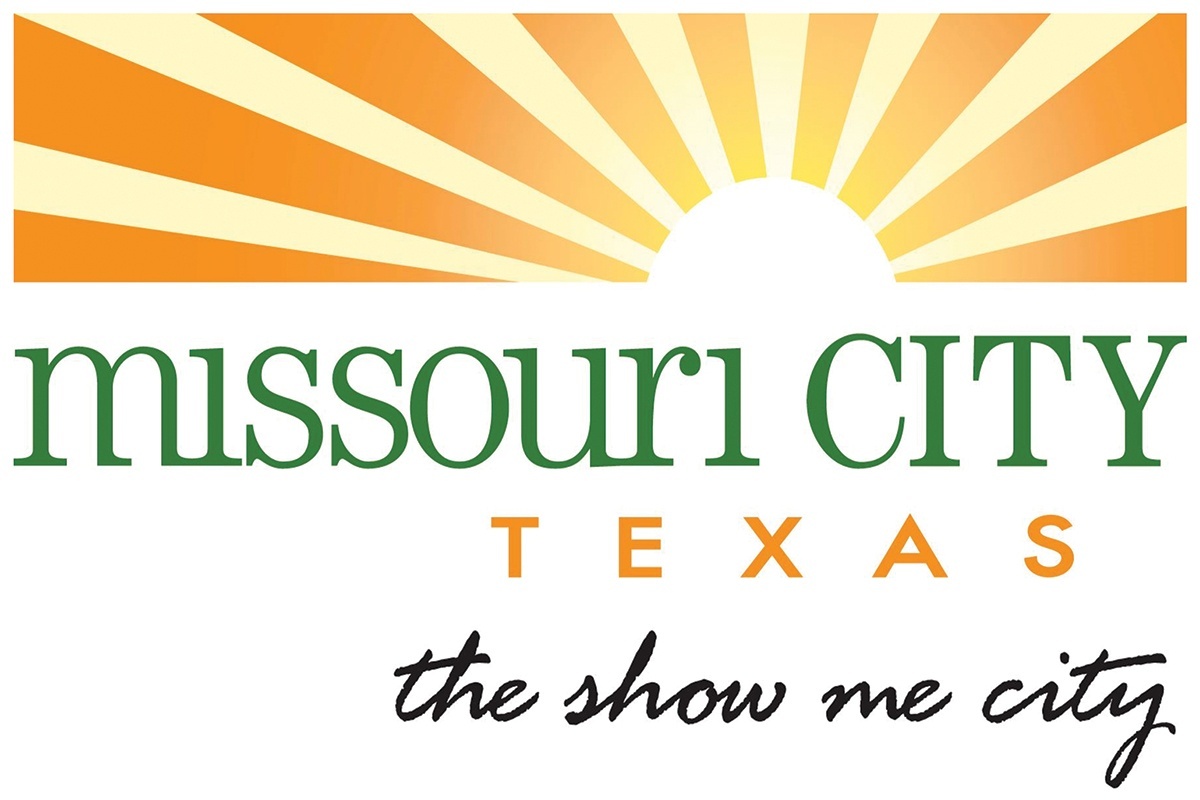
The new logo of Missouri City includes a tribute to its roots as the Show-Me City.
Other Texas towns easily found inspiration for their names. Fort Bend County’s Missouri City got its name from one of the first families that moved there in the 1800s. The family was homesick and wanted their fellow Missourians to follow them down to the area. They named their town Missouri City, and for the first decade, the majority of the city’s population was made up of relocated Missourians. To this day, the influence of the Show-Me-State persists. In the early 2000s, city leaders adopted a new slogan for Missouri City—“Show Me City.”

The original Imperial Sugar factory, which gave Sugar Land its name, still stands as it did in 1903, but today houses lofts and retail establishments.
Near Missouri City is Sugar Land. One of the fastest-growing cities in America, the town started out as a company town for the Imperial Sugar Company. The original sugar factory building still stands, primarily as lofts and retail, as do many of the sugar workers’ homes. What was once a town of 1,500 sugar mill employees now houses almost 100,000 people, a professional baseball team, one of the largest theater and concert venues in Texas, and more retail stores than there were people in 1903.
A challenge for those who move to Texas is pronouncing some of the state’s place names. If you follow traditional English, you’ll be lost forever. Most of the names defy conventional grammar, but after a while in the Lone Star State, the Texan pronunciation rolls off the tongue. Here’s a little guide:
Nacogdoches (NACK-a-DOE-ches), Refugio (Reh-FURY-oh), Bexar (Bear) County, Palacios (Puh-LASH-us), Elgin (EL-gen), Mexia (Muh-HAY-uh), Manor (MAY-ner), Gruene (Green), Balmorhea (Bal-muh-RAY), and of course Humble (don’t pronounce the H).
Humble is on the other side of Houston from Sugar Land. Most folks think that the town was named after the Humble Oil Company (later ExxonMobil), but it’s just the opposite. The oil company got its name from the town, which was named for one of the first settlers. Pleasant S. Humble arrived in the area around 1828 and later became a justice of the peace. I know I’d feel good facing a judge who was both pleasant and humble.
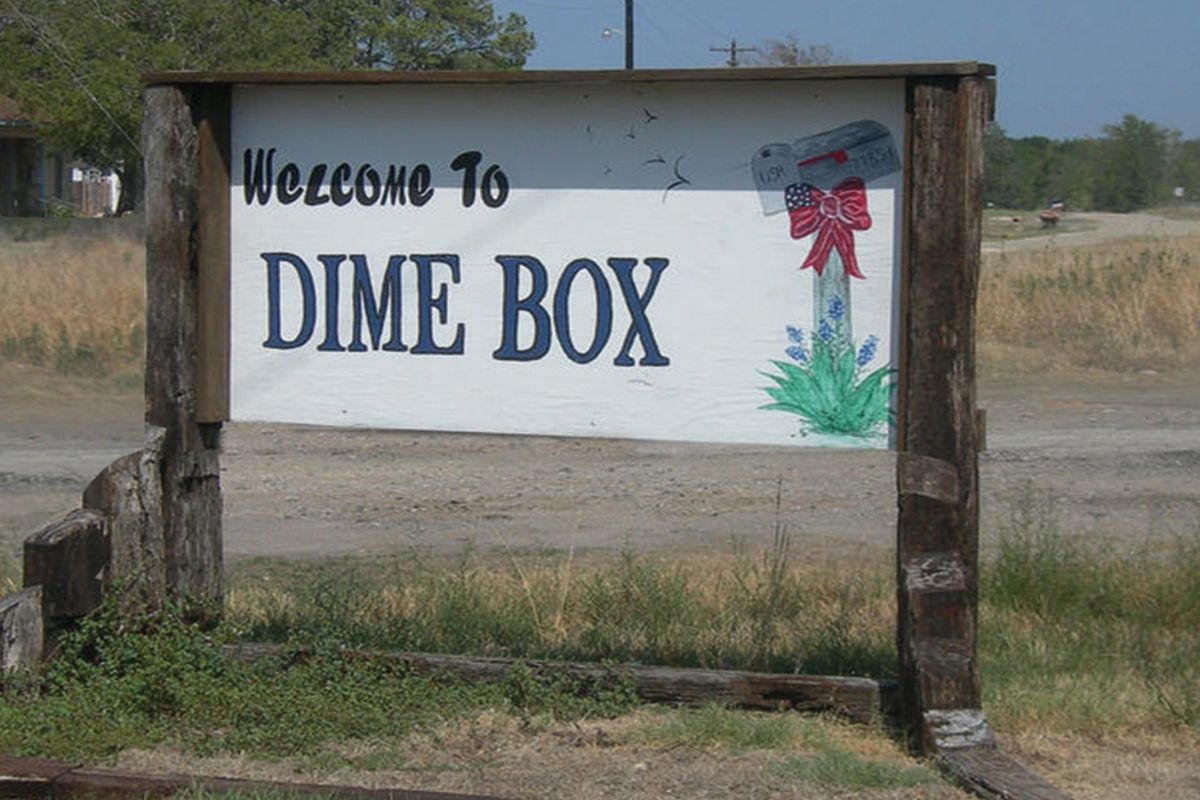
There are actually two Dime Boxes—the original one and a new one that townsfolk created to be closer to the railway.
When it comes to strange names, most Texans have heard of Dime Box. Many are unaware that there are actually two Dime Boxes. The original town named Dime Box is located on State Highway 21 in Lee County, about 20 miles from Lake Somerville State Park. New Dime Box is just 3 miles south of the old town.
So how did there get to be two towns with such an interesting name? Blame it on the U.S. Postal Service.
The original name of the town was Brown’s Mill. But almost immediately after the town was named, the residents found that a majority of their mail was being diverted to Brownsville, due to the similarity in names. The Postal Service ordered town officials to rename the town, and the residents picked a name that was synonymous with the old practice of leaving a dime on the postal box at Brown’s Mill to get letters delivered to Giddings, which at the time was the closest town with a real post office.
So, with the new name, townsfolk settled into their little hamlet and lived life as usual until 1913, when the Southern Pacific Railroad ran its tracks 3 miles south of the town. More than half of the town moved to be closer to the railway, and they incorporated as “New Dime Box” (now just referred to as Dime Box). The residents that remained kept the original name of simply Dime Box, but over the years, locals have come to refer to it as Old Dime Box.
East of Conroe is Cut and Shoot, perhaps one of the most unusual town names in the nation. It too has a most unusual story—or should I say stories—since there are several semiofficial yarns regarding how the town was named.
The most commonly told story starts in 1912, when Baptists and Methodists built a combination church, schoolhouse and community center that was to be used for services and events for all residents except Apostolics (Pentecostals) and Mormons. They called the building the Community House, even though it was obviously not for all members of the community.
Here’s the story according to the Texas State Historical Association:
“An Apostolic preacher named Stamps appeared in the community, and some of the local brethren invited him to hold a meeting at the Community House. Preacher Stamps apparently was not a very reputable person, since it was claimed by some of the citizens that he occasionally visited saloons and went dancing. When the people heard of Preacher Stamps’ intention, the community immediately paired off into two sides, those who thought the Community House should be used for all denominations, and those who thought it should be closed to the Apostolics. Each side declared their intentions; one claimed that it was going to have the meeting and the other claimed that the meeting would not be held.”
The next day, two groups of citizens gathered around the Community House armed to the teeth with knives and guns. A melee ensued, and during the skirmish, a young boy ran through the crowd yelling at the top of his voice, “I’m scared! I’m going to cut around the corner and shoot through the bushes!”
That’s the most commonly told story of how the name Cut and Shoot was coined.
No cutting or shooting happened that day, but the other origin stories for the town’s name also all involve a gathering and skirmish and end with the little boy yelling that he was going to cut and shoot through the bushes. The other versions include disagreements over the design of the church steeple and arguments over land.
There are scores more unusual names in Texas, everything from Ding Dong to Tarzan to Iraan, which is not pronounced like the Middle Eastern country but like “Ira-Ann,” named for the two folks who donated the land for the town. With so many bizarre names and stories, someone could write a book about them. Perhaps that’s my cue to cut out of here and shoot over to my computer.
